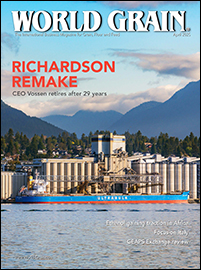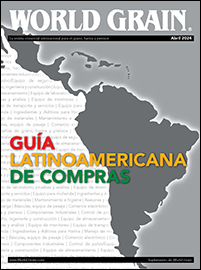Agriculture in the United Kingdom is efficient by European standards. The average British farm comprises 72 hectares, compared with an average of 17 ha in the rest of the European Union.
The British agricultural sector has experienced significant pressures since the mid-1990s, with farm incomes declining by a total of 47% between 1995 and 1997, according to the Ministry of Agriculture, Fisheries and Food. Farm income in 1998 declined by 29% from the previous year, MAFF reported. A major contributing factor has been the strength in the British pound during the period, which has had the effect of slashing domestic farm prices and encouraging imports.
As a member of the European Union, the United Kingdom participates in the E.U.'s Common Agricultural Policy. Under the CAP, support payments to farmers in each member country are adjusted based on the relationship between support prices and each country's currency; for British farmers, these adjustments resulted in reductions of about 20% in support payments.
Another major reason for the recent hard times in British agriculture is the crisis over bovine spongiform encephalopathy (B.S.E.). This disease in cattle, linked to a fatal brain disease in humans, prompted bans on the import of British beef and beef products. With U.K. beef exports previously valued at U.S.$850 million annually, the ban created significant financial pressures on the British cattle industry.
About 20% of U.K. farms produce about 70% of total farm output. These large farms, especially those without major debt loads, have weathered the downturn. The 40% of farms that account for about 25% of output have been most affected by the farm problems.
Traditionally, British farmers have lacked marketing power, but farm prices, received either through the market or through subsidies, have been high enough to foster an independent attitude among farmers. But the recent farm crisis has changed farmers' perspectives, with low prices and the increasing domination of five retail supermarket chains over the food industry spurring action.
Consequently, cooperative activity has increased notably. For example, farmer grain cooperatives are now estimated to handle nearly 5 million tonnes of grain a year, or about 20% of the market. This trend is being encouraged by MAFF and the National Farmers' Union (N.F.U.), a lobbying organization representing about 70% of farmers in England and Wales.
Agriculture Policy.
The U.K. government is committed to a free trade, market orientation for agriculture. The government supports CAP reforms that would reduce support-price incentives and would encourage farmers to respond to market signals and consumer needs. British agricultural policy also features an emphasis on environmental and food safety issues.U.K. government officials have announced five policy goals they would seek during negotiations on Agenda 2000, the program of reform proposals for the CAP. These goals include safeguards for the environment and a focus on expenditures for rural development, rather than on price-support schemes.
MAFF officials have announced support for the proposed reductions in CAP intervention prices, as well as cuts in area set-aside requirements. But they disagree with proposals that would place a ceiling on direct payments because of concerns that such limits would penalize larger, more efficient farmers.
Flour Milling.
The British flour milling industry is modern, highly integrated with large plant baking and dominated by two major companies. They are Rank Hovis Ltd., the milling division of Tomkins P.L.C., and Allied Mills, part of Associated British Foods P.L.C. As of late 1998, these two companies together operated 33 of the U.K.'s 73 flour mills and accounted for a total of nearly 50% of the market.As in many other countries, consolidation has been a major feature of the British milling industry in the past 20 years. As of late 1998, 29 milling companies independent of Rank Hovis and Allied operated 40 mills, compared with 39 companies with 47 mills in 1977.
According to information provided in mid-1998 by the National Association of British and Irish Millers (NABIM), the group representing the industry, flour production in 1996-97 totaled 4.3 million tonnes of flour, based on a grind of 5.4 million tonnes of wheat. Some 50 different types of flour were manufactured, with white bread flour accounting for about 55% of production.
In recent years, concerns have arisen within the milling industry over below-cost bread retailing by the large supermarkets. Such sales have tended to detract from consumer perceptions of bread's value and to dampen consumer demand, according to studies by NABIM.
To counter this trend, the milling organization last year took on a research project designed to show a positive consumer response when bread prices were increased. The project's purpose was to demonstrate to grocers that higher bread prices would not damage their relationships with consumers.
Livestock and Feed.
The B.S.E., or "mad cow," crisis surfaced in March 1996 when the government reported a possible link between the disease in cattle and a variant in humans. Within weeks, the European Union and more than 30 other countries prohibited imports of British beef and beef products. Although a limited lifting of the export ban within the European Union occurred in November, a series of inspections and reporting requirements remains, with further assessments scheduled before exports may resume.In response to the crisis, the U.K. government put into place a variety of internal schemes to protect public health, eradicate B.S.E. and compensate the domestic cattle industry. These include the Over Thirty Month Scheme, the Calf Processing Aid Scheme, the Beef Assurance Scheme, Cattle Passports and the Selective Cull.
These measures included destruction of potentially contaminated herds, which reduced cattle numbers significantly. Accordingly, total compound feed production between 1995-96 and 1996-97 dropped 3.3%, while feed for cattle and calf use plunged more than 25% between 1995 and 1998, according to MAFF statistics.
Cattle numbers have begun to stabilize as herds are being rebuilt, and feed output is expected to rebound.
|
Data |
Production |
Consumption |
Exports |
Imports |
|
(1,000 tonnes) |
||||
|
Wheat |
15,500 |
12,200 |
4,500 |
1,000 |
|
Barley |
6,600 |
5,750 |
1,200 |
125 |
|
Wheat flour |
4,534 |
n/a |
n/a |
n/a |
|
1998-99 marketing year, except 1998 calendar year for wheat flour |
||||





